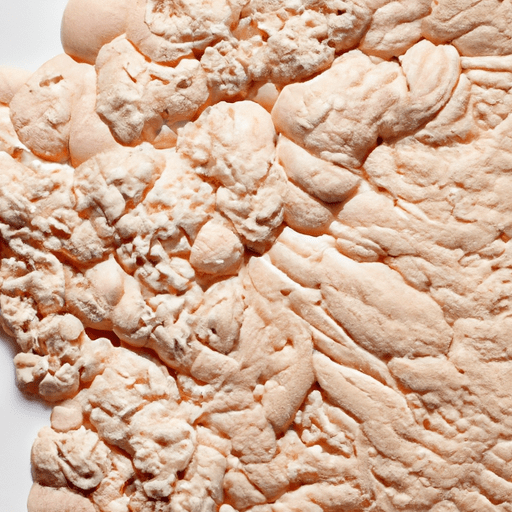Unlocking the Secrets of Instant Yeast: A Magic Ingredient in the Kitchen
Instant yeast is a game-changer in the kitchen, bringing the magic touch to your culinary creations. This tiny powerhouse is a staple in baking and cooking, offering convenience and consistency. In this blog post, we’ll dive deep into the world of instant yeast, exploring its taste, common uses, nutritional value, and intriguing history. Grab your apron and let’s embark on this yeast-filled adventure!
Taste and Aroma Delights
Instant yeast, also known as bread machine yeast or rapid-rise yeast, offers a neutral taste and aroma. Unlike its sibling, active dry yeast, instant yeast does not require proofing and can be added directly to your dough or batter. Utilizing living organisms known as Saccharomyces cerevisiae, this unique ingredient helps create a fluffy and airy texture, enhancing the overall taste and mouthfeel of countless dishes.
Essential Culinary Applications
1. Glorious Bread Baking
Instant yeast is an essential component in bread baking. It accelerates the rising process, allowing dough to double in size rapidly. Whether you’re crafting artisan loaves or tender dinner rolls, instant yeast is the key to achieving that perfect light and airy crumb.
2. Delectable Desserts
From cinnamon rolls to fluffy cakes, instant yeast adds a touch of magic to sweet treats. It activates fermentation, leading to bubbly and tender dough that results in tantalizing desserts. By using this remarkable ingredient, you can unlock a world of gastronomic delights in your kitchen.
3. Savory Surprises
Not limited to sweet creations alone, instant yeast can also be used in savory dishes. Think chewy pizza crusts, fluffy dinner rolls, or delectable homemade pretzels. Its versatility knows no bounds, enabling you to explore an array of delightful culinary possibilities.
Nutritional Value: More Than Meets the Eye
Instant yeast may be small, but it packs a nutritional punch. It is an excellent source of protein, B-complex vitamins, and minerals such as iron and zinc. Additionally, it contains dietary fiber, which promotes healthy digestion. Incorporating instant yeast into your baked goods not only elevates their taste but also provides a nourishing boost for your body.
An Intriguing History
The story of instant yeast dates back to the late 19th century when researchers sought to find a better and faster way to prepare dough. Thanks to the pioneering work of Fleischmann and Company, instant yeast entered the culinary scene in the 1940s and gained popularity due to its convenience and reliability.
Initially used in commercial baking, instant yeast eventually found its way into home kitchens, transforming the way we approach bread making and baking. With instant yeast, home cooks could save time as they no longer needed to proof yeast separately, speeding up the preparation process and providing consistent results.
Fun Facts You Never Knew
- Instant yeast was first developed for military use during World War II, providing a quick and easy way to produce bread for soldiers.
- It is estimated that instant yeast can increase the volume of dough by 50-100% due to its rapid fermentation capabilities, resulting in beautifully risen baked goods.
- One teaspoon of instant yeast can leaven approximately four cups of flour, making it a highly efficient ingredient.
Now armed with a deeper understanding of instant yeast, you can unlock its potential in your culinary adventures. From heavenly bread to mouthwatering pastries, this versatile ingredient will continue to make its mark in the world of cooking.
So, don’t be afraid to embrace the magic of instant yeast! Let it guide your dough to glorious heights, tantalize your taste buds, and elevate your baking game. Happy cooking and may your creations rise to new levels!
Interesting Facts about Instant Yeast:
Origin: Instant yeast, also known as active dry yeast, was first developed in the late 20th century as a more convenient and time-saving alternative to traditional yeast.
Common Uses: Instant yeast is widely used as a leavening agent in baking. It helps bread and other baked goods to rise by producing carbon dioxide when it comes into contact with moisture and warmth.
Nutritional Benefits: Instant yeast is a good source of various B vitamins, including thiamine (B1), riboflavin (B2), niacin (B3), and folic acid. It also contains some amounts of protein and minerals like zinc and iron.
Properties: Unlike active dry yeast, which needs to be proofed in water before use, instant yeast can be added directly to dough without the need for proofing. It dissolves and activates quickly, saving time and extending the shelf life of the product.
Historical Significance: Instant yeast revolutionized the baking industry by reducing the time required for bread baking. Before its invention, bakers had to work with fresh or active dry yeast, which required longer fermentation times.
Types of Instant Yeast: There are different types of instant yeast available, including regular instant yeast, fast-acting yeast, and bread machine yeast. Each type has specific properties regarding rising time and suitability for different recipes.
Storage: To maximize the shelf life of instant yeast, it is best stored in a cool and dry place. Unopened packages can be refrigerated, while opened packages can be resealed and stored in the freezer for longer-term storage.
Conversion: When using instant yeast as a substitute for active dry yeast, the general rule is to use approximately 25% less instant yeast by weight compared to active dry yeast.
Instant Yeast vs. Fresh Yeast: Instant yeast provides a longer shelf life and is more convenient to use than fresh yeast. While fresh yeast has a shorter lifespan and requires refrigeration, instant yeast can be stored at room temperature for extended periods.
Gluten-free Option: Instant yeast is suitable for gluten-free baking, and there are specific gluten-free instant yeast products available for individuals with gluten sensitivities or celiac disease.




Use the share button below if you liked it.
It makes me smile, when I see it.